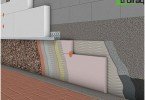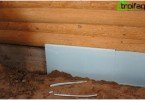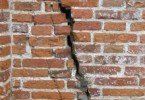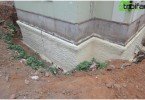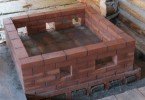Base Finishing Materials
The basement is a part of the foundation located above ground level and preventing the penetration of moisture and cold into the house. Another goal of the basement is the ability to take the load of the entire structure and evenly transfer it to the foundation. The height of the basement is determined depending on the design and architectural features of the structure. However, according to building codes, the height of the base must not be less than 40-50 cm.
Content
- Choosing the options for finishing the base
- 1. Plastering followed by painting
- 2. Finishing the base
- 3. Facing the base with natural stone
- 4. Artificial stone as a practical option
- 5. Siding – an excellent alternative
The base will prevent moisture from entering the structure, help protect the facade from contamination and possible mechanical damage. Therefore, selecting materials for basement finishes, It should be based not only on the aesthetic properties and the planned design of the structure, but also on the protective properties that will resist the negative influences.
Choosing the options for finishing the base
The aesthetic appeal of the entire structure will largely depend on the correct and harmonious design of the basement. Today in the construction market there are a huge number of various design options that differ both in texture and color, and in the properties of the materials used..
Consider the main options for finishing the basement:
Plastering followed by painting
This method of decoration is quite common. The main advantages are:
- the ability to hide the imperfections and irregularities of the walls;
- breathability;
- speed of implementation;
- wide range of the most various color schemes.
Unfortunately, the main disadvantage of this method is its fragility. This coating will need to be repaired every 2-3 years..
Basement Tile
Tile materials are made on the basis of cement-stone, polystyrene or asbestos-cement mixtures and are mounted on the facade with the help of special moisture-resistant adhesive solutions. Finishing the base with tiles will not only give the house an aesthetically attractive look, but will help protect the building from the vagaries of nature..
Due to the ease of installation and the protective properties of the materials, the tile can be used to warm the walls of the basement.
Facing the base with natural stone
Natural stones, being a material donated by nature, have been used for decorating for several millennia and successfully continue to compete with the most modern finishing materials..
Finishing the base with natural stone is:
- durability;
- lack of need for annual repairs;
- ease of replacement of individual elements;
- damage protection;
- the ability to create architectural compositions;
- variety of finishing methods;
- rich colors;
- variety of textures;
- ease of installation.
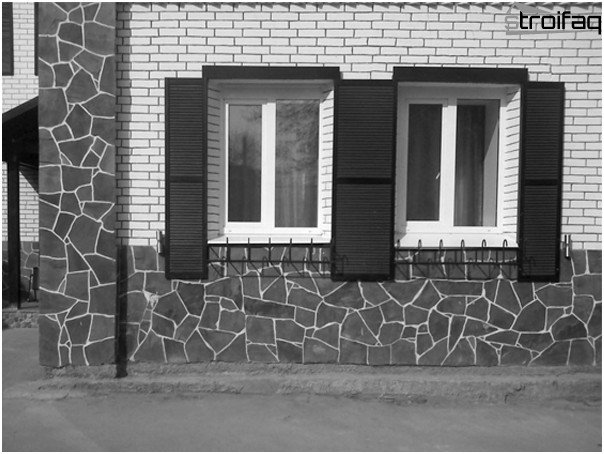
Natural stone plinth – respectability, durability
Artificial stone as a practical option
Today, an artificial stone has become a worthy substitute for natural materials, not only not inferior to the properties of natural stones, but even surpassing them in certain parameters.
For example, sandstone and granite have a rather limited range of colors, while an artificial stone made from a mixture of sand, Portland cement and special additives can have any color – from neutral beige to bright blue.
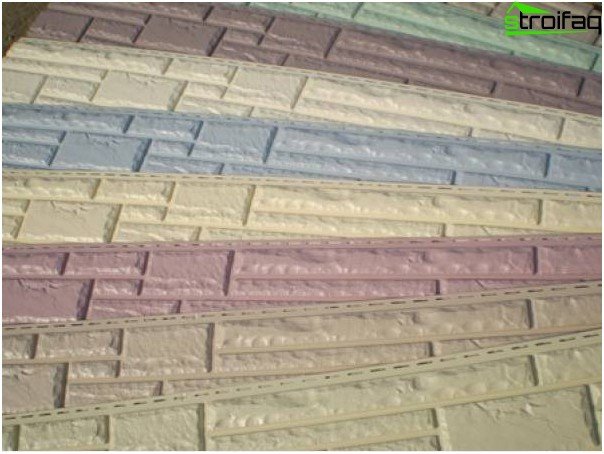
Artificial stone in the basement – a lot of interesting colorful variations
Finishing the basement with artificial stone reliably imitates brick, natural or sawn stone. Within the framework of one type of material, several standard sizes are usually made, and the use of special corner elements make the artificial finish almost visually indistinguishable from natural.
Finishing the basement with stone, both artificial and natural, occurs in several stages:
- alignment of the walls of the base with an adhesive;
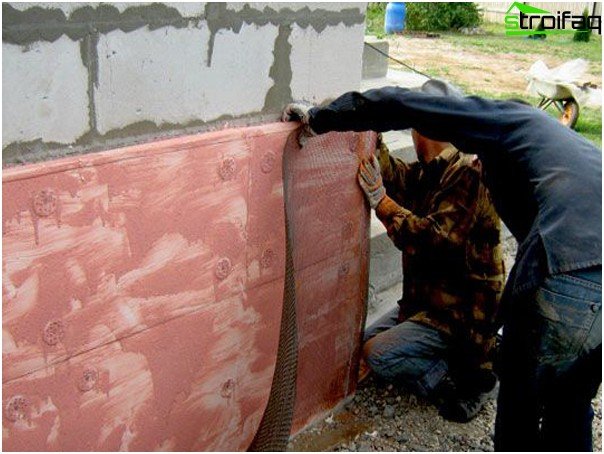
The process of facing the base with stone – fixing the reinforced mesh to the aligned wall
- mount on the base of the metal mesh;
- surface marking;
- fastening of facing materials;
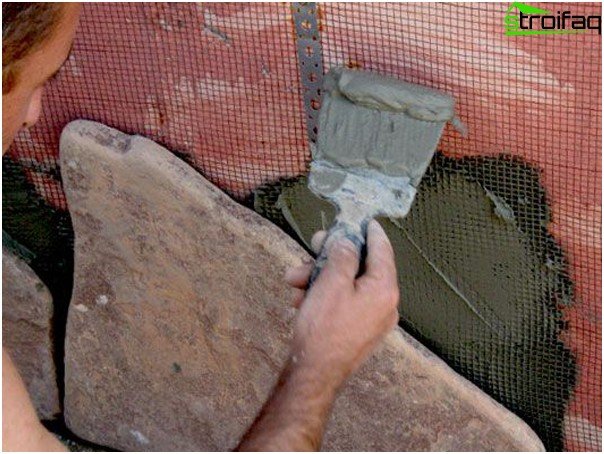
Binder application
- sealing joints;
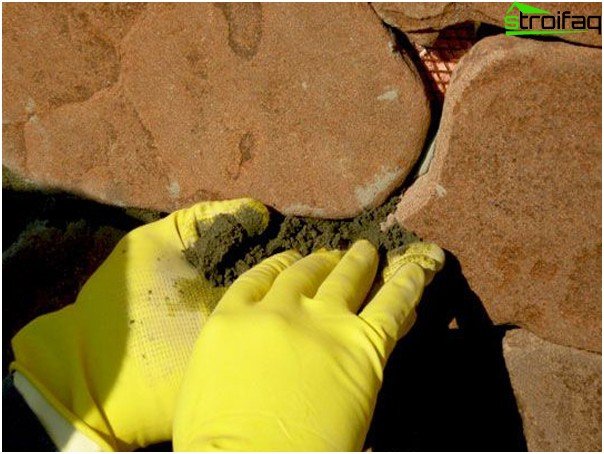
Sealing up joints after fixing cladding elements
- treatment with special protective compounds.
Siding is an excellent alternative
This architectural and design solution allows you to simultaneously decorate and protect the basement surface with minimal cost..
Basement siding can imitate wood, brick, stone and many other surfaces of various shades and textures.
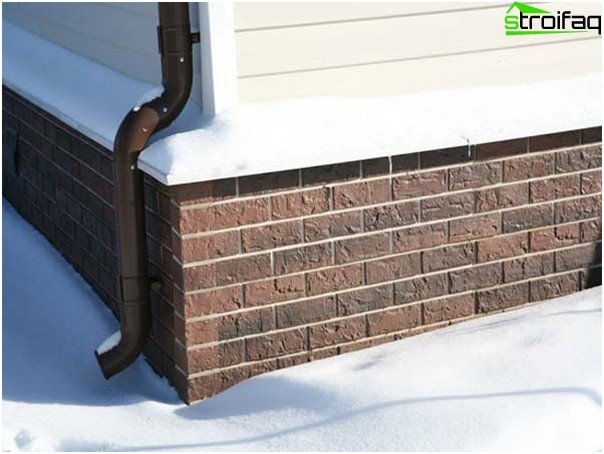
Using masonry siding
Siding panels are made of polypropylene, and special additives that are part of the material provide increased elasticity and strength..
Finishing the base with siding is done on a pre-made crate using galvanized nails or self-tapping screws. Ease of use of siding also lies in the absence of the need for preliminary alignment of the walls. Existence of system of grooves provides easy joining of panels.

Block house in the decoration of socles, facades
The basement finish carries important protective and aesthetic functions. With the help of well-chosen color solutions and the right choice of materials, you can give the structure a solid and respectable appearance. In this case, contrasting finishes, finishes with natural or artificial materials, and tiling with imitation of masonry are best suited. You can also visually lighten the design by picking up a finish with a smooth texture in light colors. The best solution for this would be plaster, plinth trim and siding panels.
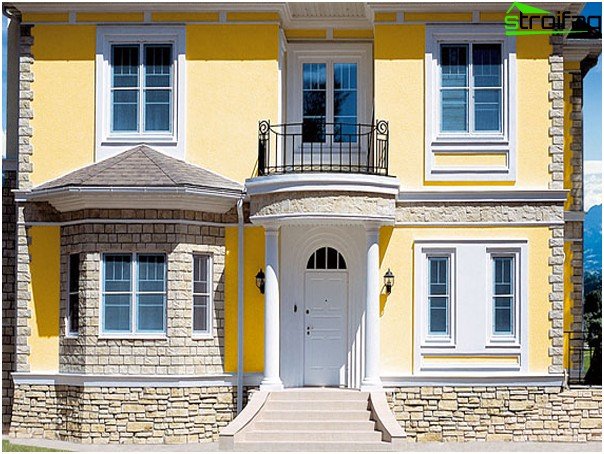
The basement lining decorates the facade, protects building materials from atmospheric negativity


